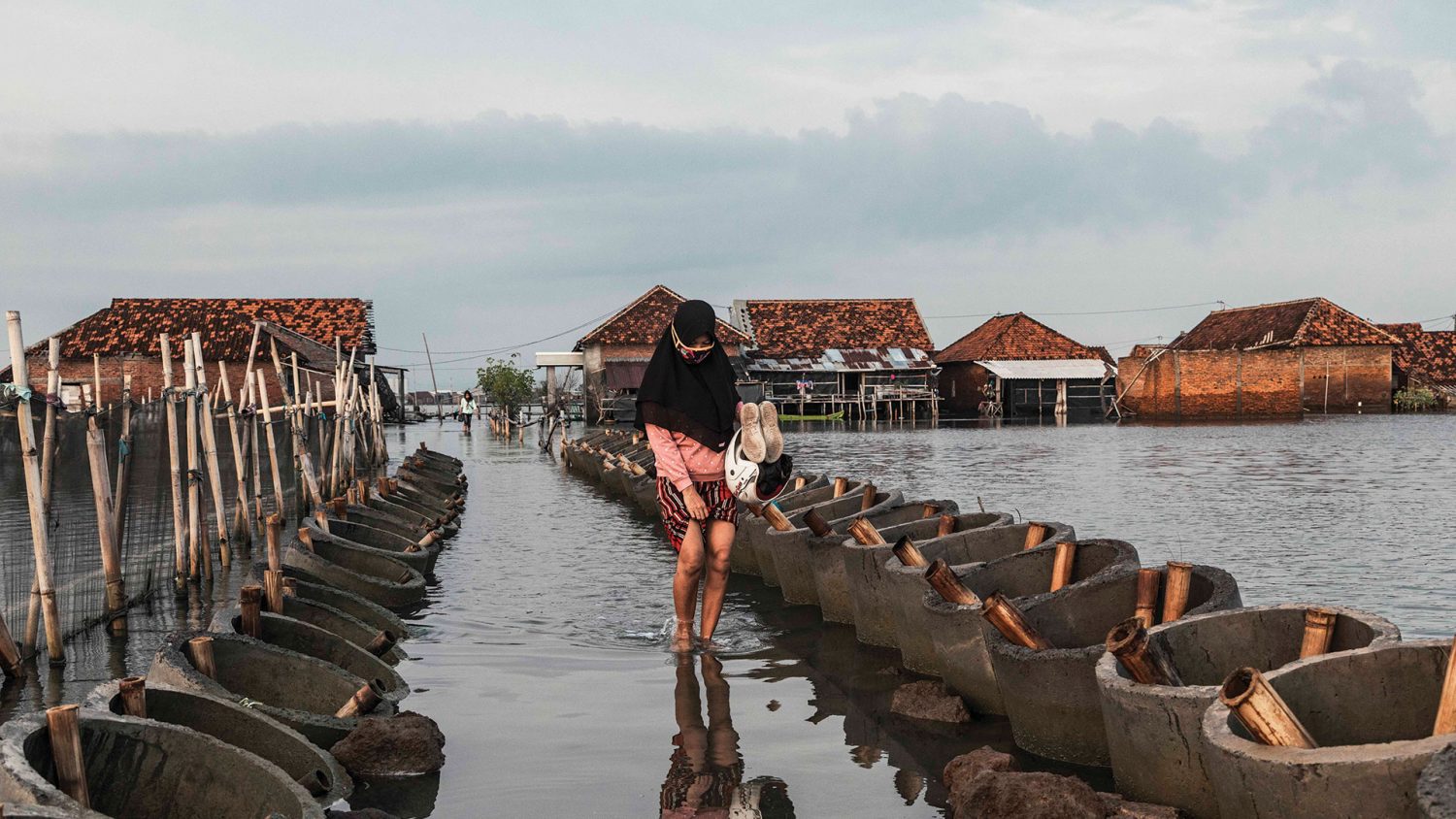On ‘RISE: a Land of the Sea project’
Indonesian photographer Irene Barlian, recipient of the Objectifs Documentary Award 2022 (Open Category), presented her first solo exhibition, RISE: a Land of the Sea project, at Objectifs from 30 March till 7 May 2023. Curated by Siddharta Perez, Irene’s show captured a developing body of stories about communities seized by the escalating flooding crisis in Java, which harks to her ongoing advocacy towards inclusive and sustainable environmentalism.
The following recap presents highlights from Irene and Siddharta’s conversation about the process and considerations that went into RISE: a Land of the Sea project. This recap has been paraphrased and shortened for brevity.
Irene on the rationale behind RISE
Irene: In places like the northern Indonesian coast of Java, which is currently inundated with sea water, climate change is not a mere future – it’s already happening. In some places, sea flooding had already started in the ‘80s. Entire villages have had to migrate to other areas which eventually faced sea flooding too.
Economies have been affected, especially that of fishing and batik production (which forms the bulk of the villagers’ livelihoods). Sea water has besieged the villages and destroyed road infrastructure, making it so that these places can now only be accessed by boat. One of the photos in my show depicts a family in front of their house. There used to be 70 families living in that village, and now there’s only that one.
This developing body of work is important to me because it shows people what is already happening as a result of climate change, especially when there are people who still don’t believe in climate change, even within Indonesia itself. The latest report from the UN intergovernmental panel on climate change states that we need to act now to avoid an overheating planet.
Because community engagement is important in my work, I also collaborated with Mentari for the video installation in my show. Mentari is a dancer whose old studio in Java was destroyed by the rising sea levels, and the video shows her performing in her old village as her response to the crisis.
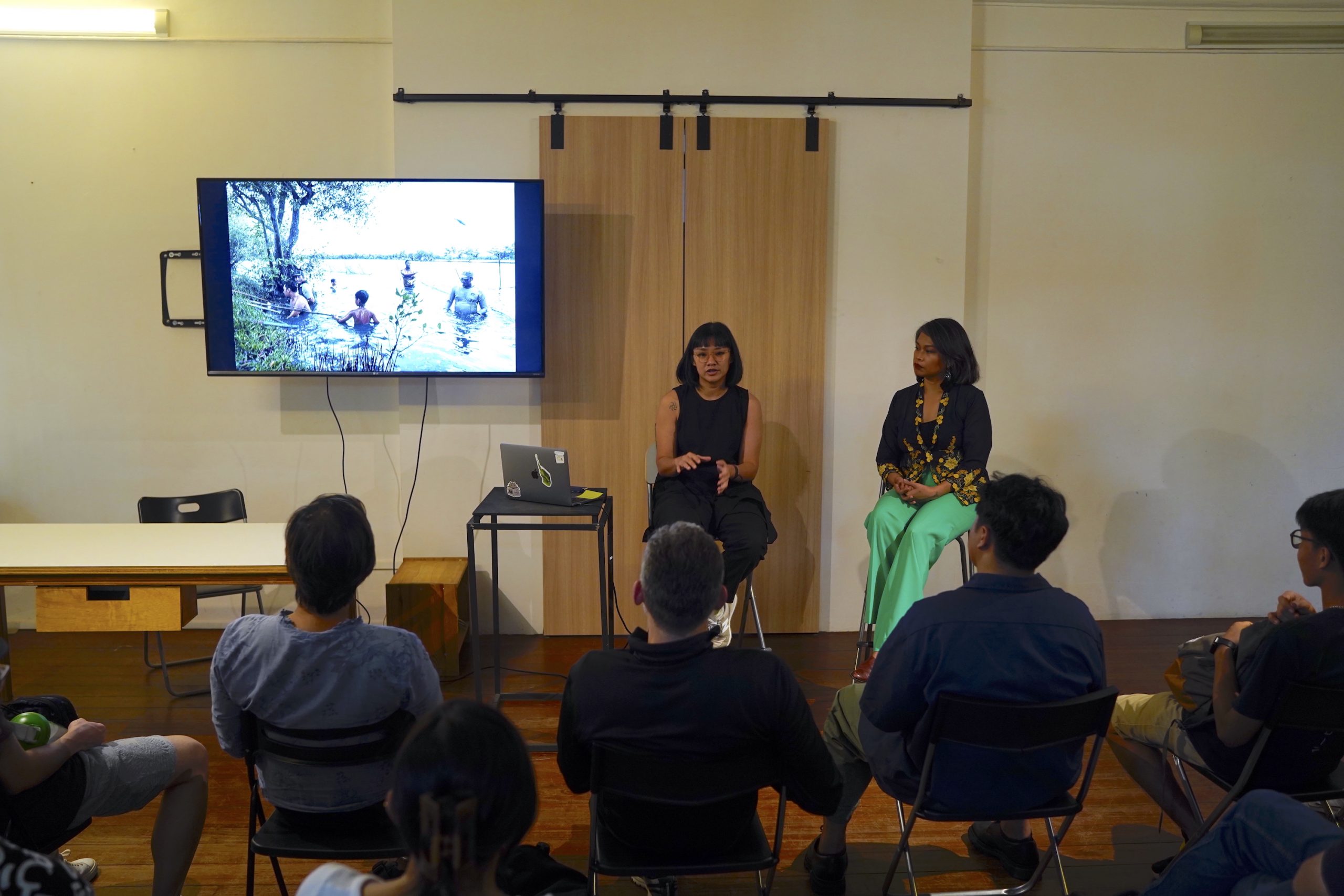
L-R: Irene Barlian, Siddharta Perez
Siddharta on working together with Irene to curate RISE
Siddharta: Because Irene had already been documenting the villagers [since 2019], and shown the project at different festivals and on various platforms in differing permutations, I had to especially consider what her exhibition at Objectifs can do for her ongoing project. For example, what does it mean for her work [and the environmental issue plaguing the villagers] to be shown in a solo exhibition, and what kind of impact can it have on an artistic practice? There were also considerations to be made regarding the shift from an assignment-based project to the wider form of storytelling [central to staging an exhibition].
I set out several exercises for Irene at the beginning to help expand this thinking of how to talk about the work. For example, we mapped out images by timing as chronology was important to see the effects of the flooding. Due to the previous circulations of the images, my next assignment for Irene was to examine which stories recurred in these prior iterations. This was so as to see that there are varied lenses to approach the work, and explore the sort of storytelling that was emerging from these varied modes.
It emerged from our discussions that 2 main characters in her project kept coming up: There was Finah, whose changes in her livelihood due to the impact of the rising sea levels over time were mapped out. And there was Mentari, who grew up in a flooded village before she moved away, and who, through Irene’s project, evoked her circumstances through dance and how she reconciled with leaving.
In thinking about the villagers’ livelihoods and their economies of trade, we also talked about how ironic it was that though water is so essential to batik and fishing, which they rely on, it is also the thing that destroys.
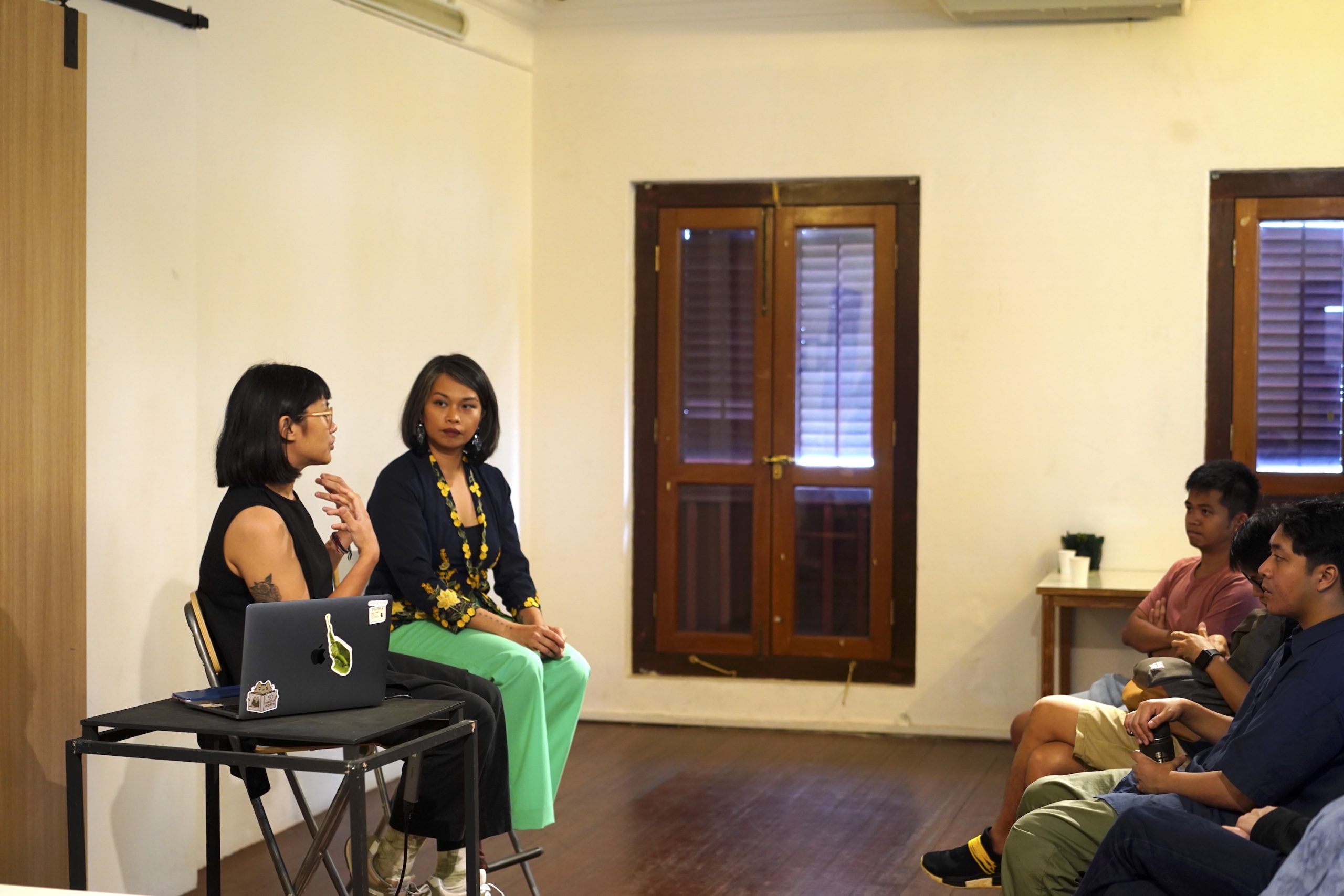
In conversation on RISE
Siddharta: Do you think being a woman photographer helped you in making the work – like being allowed in certain spaces – or having a different understanding of the issues or images?
Irene: Being a woman photographer helped give me more access to certain scenarios. People felt less threatened by my presence, and families were more open to me. They were more willing to share things with me. For example, it was easier for me to connect with Mentari as we’re both mothers and could relate to the experience of having to juggle motherhood and work.
Siddharta: What did you feel was a surprise when we started envisioning the show? Because the final edit was not your usual edit.
Irene: (jokingly to the audience) Sidd killed all of my darlings! (in reference to her favourite images)
Siddharta: (laughing) It was 3 only ok!
Irene: The Objectifs’ exhibition makes the story feel more complete. Sure, [some of] the images have been exhibited at other festivals, but those were my own selections, and are the powerful ones that might work as singles. You’ve sequenced them in a way that I feel is more impactful. In this exhibition, each image might not be as strong [on their own], but [put together], it feels more cohesive as a story.
For photo festivals, you just submit your images, and they don’t involve you in the process. They decide everything. But here I had to learn about sizing, and there were discussions. All this was very new to me. I simply avoid repetition in the telling of these stories when submitting for festivals, and focus on variety instead. But in an exhibition, [the choices] are different.
I also had the opportunity of experiencing other things here that I wouldn’t be able to in festivals. For instance, we were able to decide on having the captions flow through the exhibition space, and have them knee high in height, emulating the flood line in these places. There’s also the architectural intervention of the banners that are on the façade of the gallery – it became an experience rather than just about the images.
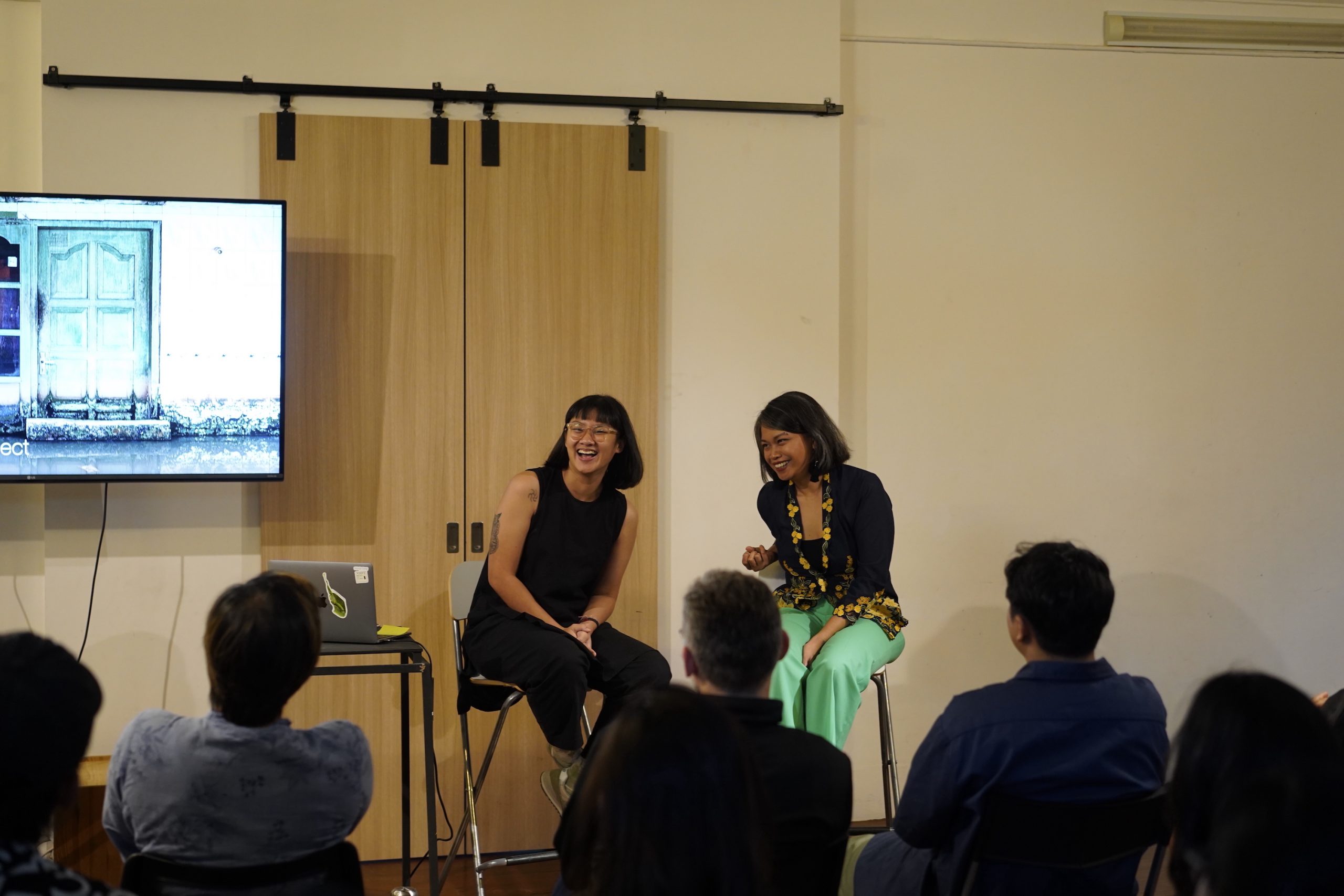
Siddharta: Irene has a spatial and architectural way of portraying the situation. I wondered how I could bring this out in a language that Irene already uses. So that’s why we decided to depict this series of doors [on the façade of Objectifs] as a mini intervention. A magazine or festival wouldn’t normally choose these images of the doors, for example, but in a solo exhibition, we were able to do so.
On the note of captions – we’re so used to having images and their captions in close proximity. I felt having captions were very important, but how do we refrain from regurgitating this expected format? In this case, we built parallel readings. If you look at the image and the captions nearby, they don’t exactly correspond in this show, thus creating one more incentive to read them. The captions are not just supplementing the images; they are a separate section [altogether]. Also, not all the captions and stories have the same depth of encounter, so having them in separate sections allow them to be surfaced in different ways.
Audience: How did you structure the narrative of the exhibition? What were some of the narrative angles that you used to structure this show?
Siddharta: We went through several exercises, such as thinking about floodlines and thresholds, and how people carry these lines physically and conceptually. We also thought about the micro and macro balance of images, as well as how to tell the broader story and wider encounter of environmental and economic impact, but make it also about quiet, intimate encounters like a funeral, or experiences within the homes.
Movement was also important. The show is about the different bodily experiences, the water, and different submergings, so we had to include images that capture people in motion and show how life is still carrying on in spite of the flood. At the same time, the show is also about stillness and the residues that are left, like the batik stamps, and the deteriorating soft ground and materials. This was how we considered the images. We also thought about the hierarchy of image sizes to tell the story rather than through quantity.
Audience: Is there something that you’re trying to teach through your exhibition?
Irene: As a photographer, I can only do my part in sharing about the issues. We know that this is a problem that needs to be tackled structurally and collectively. I can only contribute by sparking a conversation – I can’t find a solution or do this alone. I think the best thing I can do is to show people what [the disaster] looks like. In terms of educating the audience or teaching, that might be asking too much a photo, no? I can only spark a conversation.
Audience: Your show humanizes this issue of climate change by scaling it down to the effects on the human body. I’m sure you had to go into the water to shoot. How did this experience affect how you told the story? If you’re feeling the impact physically by being in the flood, does it change the way you shoot?
Irene: It’s not nice. I shoot with boots on. When the water gets high, it gets inside your boots and it’s hard to move around. The water is dirty, and sometimes it’s even blackish. It constantly makes me think how it’s not a way of life for people to live in such conditions. I feel privileged enough that I can just head home after shooting, but these people can’t. It’s not a sustainable lifestyle for these people.
Audience: Were there any moments of hope or optimism for you in making the work?
Irene: When you hear about climate change it’s always about the devastating impact on people’s lives. To push a positive and hopeful narrative into a story like that, I focused on seeing the little things in their daily lives. I noticed people helping each other out. They have to face sea water every day, but they are still helping each other out. The government might offer them land to move to but they have to build the houses themselves. Some of them are fishermen, so they don’t know any other way of working. There is a wider urgency and structural change that need to happen.
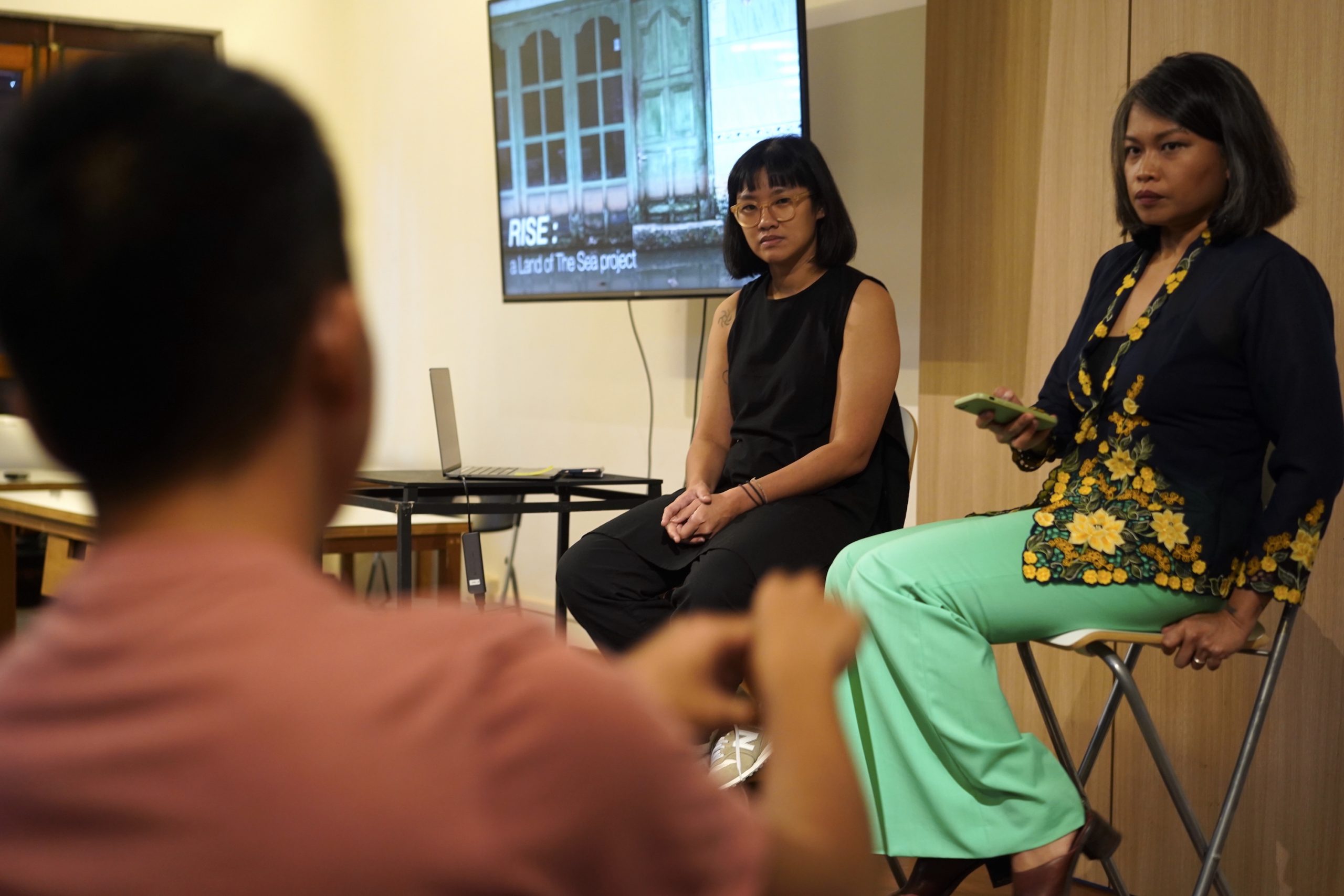
Recap by Geraldine Cheng, Apr 2023

